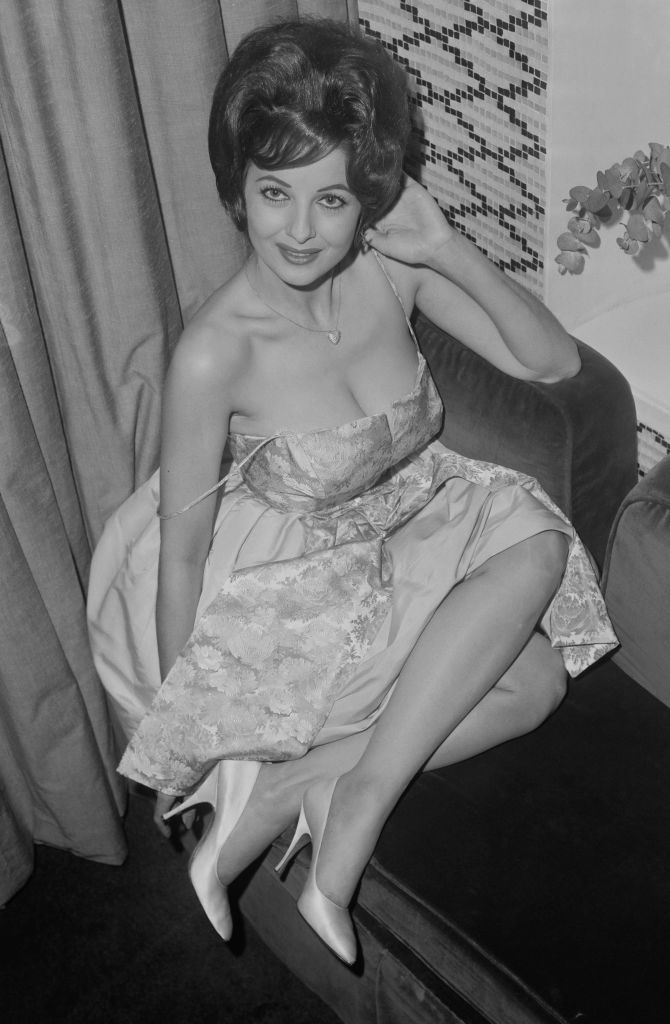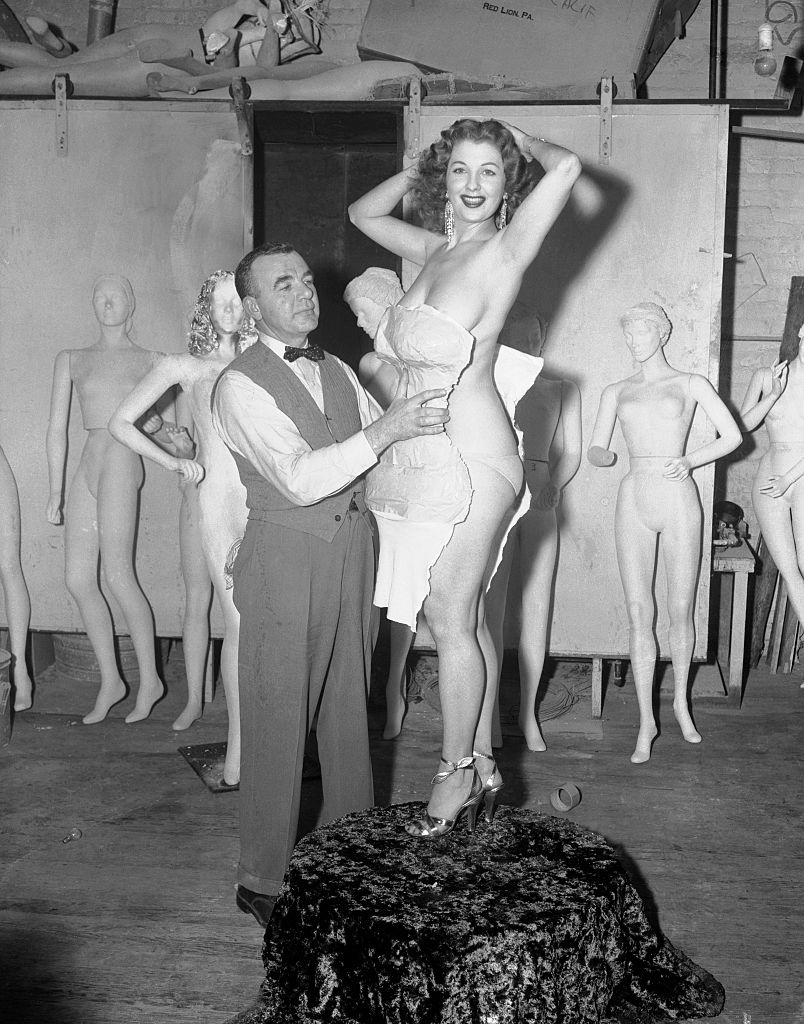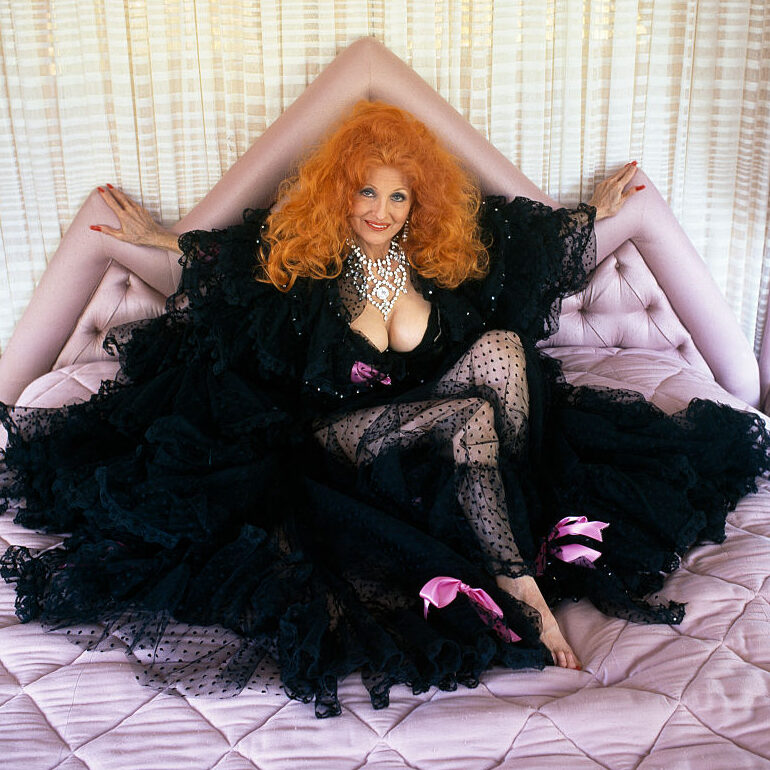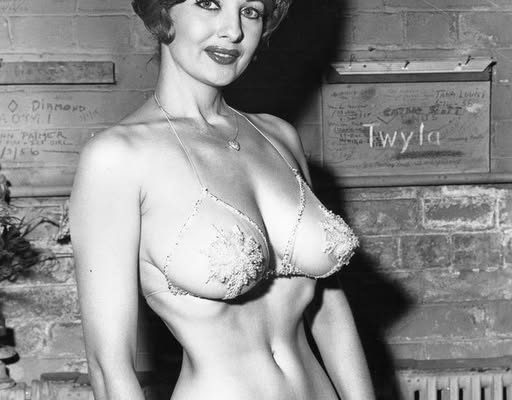When you hear a name like Tempest Storm, you expect fireworks — and that’s exactly what she delivered. With fiery red hair, unapologetic confidence, and a stage career that lasted more than six decades, she became far more than a burlesque performer. She became a cultural icon.
But behind the rhinestones and glamour stood a woman who rose from hardship in the segregated South to redefine femininity, fame, and freedom. Her journey from Annie Blanche Banks to Tempest Storm is a story of resilience, reinvention, and lasting influence.
From Annie to Tempest

Tempest Storm ruled the stage for more than 60 years, but her beginnings were far from the glittering world of show business. Born Annie Blanche Banks on February 29, 1928, in Eastman, Georgia, she grew up in a small farming community marked by poverty and struggle.
Her early years were difficult, and by the age of 14, she ran away from home seeking independence. Working as a waitress in Columbus, Georgia, she entered into a brief marriage with a U.S. Marine to gain legal freedom from her parents, though it was annulled within 24 hours. A year later, she married a local shoe salesman, but that union too quickly ended.
Reflecting years later, Storm said she always dreamed of Hollywood — of lights, cameras, and a life beyond the narrow boundaries of her childhood. In her late teens, she moved to Los Angeles, where a casting agent suggested a name that would change her life: Tempest Storm.
That decision marked the birth of a legend. While working as a cocktail waitress, a customer noticed her charisma and suggested she try burlesque. She didn’t even know what that was at the time. “He said it was just dancing, but you take your clothes off. I said: ‘Oh no, not me. My mother would disown me.’” Yet within months, she was captivating audiences with elegance and style.
A Star Is Born

By the late 1940s, Tempest Storm made her burlesque debut. Unlike many of her contemporaries, her performances weren’t about shock — they were about artistry. Every movement was choreographed, every detail deliberate. Wearing rhinestone gowns and feathered costumes, she turned striptease into a form of glamorous theater.
By the mid-1950s, she was one of the highest-paid performers in her field, reportedly earning $100,000 a year — equivalent to nearly a million dollars today. Her famous curves became legendary, so much so that Lloyd’s of London allegedly insured her bust for $1 million.
Her fame crossed borders. The press dubbed her “Tempest in a D-Cup” and “The Girl Who Goes 3-D Two Better.” She shared stages with icons like Bettie Page, Lili St. Cyr, and Blaze Starr, and appeared in the burlesque films Teaserama (1955) and Buxom Beautease (1956), which pushed artistic boundaries of their time.
A Woman Ahead of Her Time

Tempest Storm was more than a performer — she was a pioneer. She challenged social norms around beauty, sexuality, and aging. While many performers altered their appearances with surgery, Storm refused, saying her natural beauty was enough. She lived with discipline and balance, avoiding smoking and drinking, and maintaining a wellness routine that included massages, saunas, and healthy meals.
Her popularity often reached fever pitch. In 1955, when she appeared at the University of Colorado, a crowd of more than a thousand students nearly rioted. “They rushed me like a herd of cattle,” she later recalled. It was clear that she had become a cultural phenomenon — a woman both desired and respected for her confidence.
Breaking Barriers
Offstage, Tempest Storm’s personal life was as bold as her performances. She was romantically linked to famous men, including Elvis Presley, Mickey Rooney, and mob figure Mickey Cohen. But it was her marriage to jazz singer Herb Jeffries in 1959 that truly made headlines.
Their union, between a white burlesque performer and one of Hollywood’s first Black singing cowboys, broke racial taboos in midcentury America. At a time when interracial marriage was still illegal in many states, their relationship made a statement — but also came with a price. The publicity caused her to lose work in certain cities, and she faced public criticism.
Despite the challenges, Storm remained proud of her marriage. Although it eventually ended, she and Jeffries remained close friends for the rest of their lives. The episode demonstrated her courage in confronting prejudice long before conversations about equality were part of mainstream culture.
Still Shining in Her Later Years

Most performers fade with time. Tempest Storm did not. She continued performing into her sixties and even made her final stage appearances in her eighties. She often said that the stage was where she felt most alive.
In 1999, she was honored at San Francisco’s O’Farrell Theatre, where the city declared a “Tempest Storm Day” to celebrate her extraordinary career. She later performed at the Burlesque Hall of Fame events, inspiring new generations of artists to embrace sensuality as empowerment, not shame.
Even in her later years, she maintained her signature red hair and trademark confidence. Documentaries such as Tempest Storm (2016) captured her story for new audiences, celebrating her enduring impact on entertainment and culture.
A Legacy Beyond Glamour
When Tempest Storm passed away in Las Vegas in 2021 at the age of 93, she left behind a legacy that transcended burlesque. She had transformed what was once seen as fringe entertainment into a symbol of artistic independence and female confidence.
Storm proved that sensuality doesn’t expire with age — it evolves. She showed that beauty could be powerful without apology, and that confidence could break through the barriers of gender and social expectations. In many ways, she was performing feminism before the term became mainstream.
Modern stars like Dita Von Teese often credit Tempest Storm as their inspiration, acknowledging her as one of the original figures who turned burlesque into a celebration of self-expression and freedom. She bridged eras — from the postwar glamour of the 1950s to the modern movements for body positivity and empowerment.
Redefining Power and Femininity
Tempest Storm’s influence extends far beyond the stage. She redefined beauty not as perfection, but as authenticity. Her success story — rising from poverty, enduring discrimination, and building a career on her own terms — mirrors the broader evolution of women’s independence in the 20th century.
She was the original hourglass, not just in form but in spirit — timeless, unbreakable, and graceful under pressure. Her name, once chosen by chance, became synonymous with strength and allure.
Conclusion
Tempest Storm’s life was a storm indeed — full of passion, struggle, and triumph. She shattered the mold of what a woman could be in entertainment and inspired countless others to do the same. From a small-town girl in Georgia to an international icon, her story is a testament to perseverance, authenticity, and the power of reinvention.
She was unstoppable. She was unforgettable. She was the original hourglass who changed how the world saw beauty, confidence, and power.



